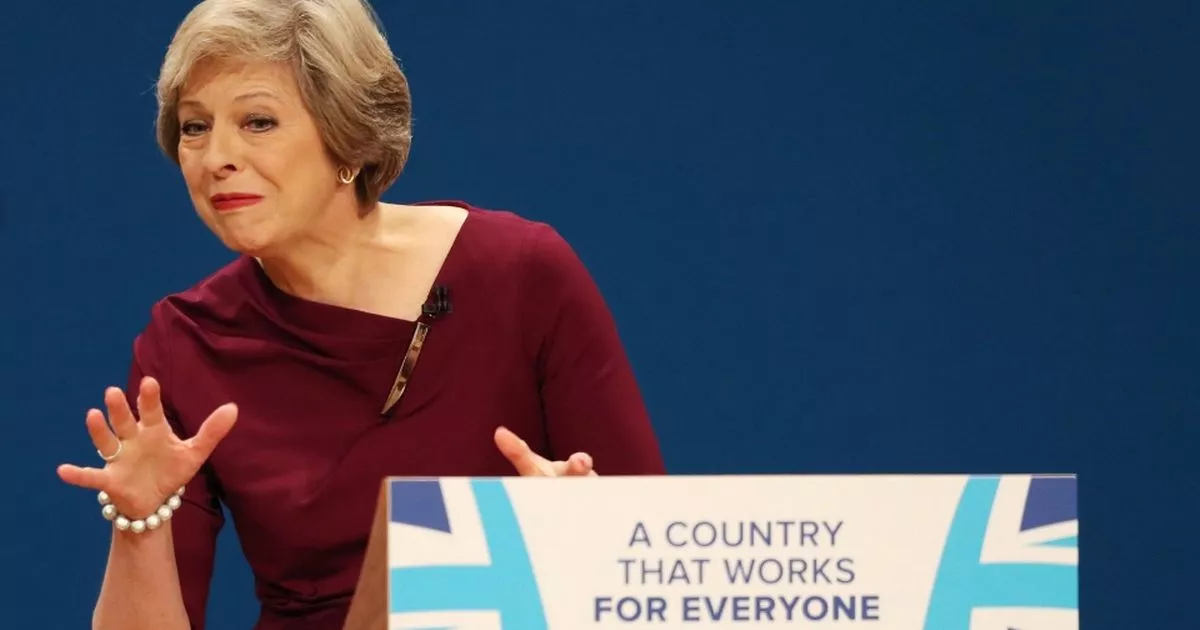The Nasty Party? Analysing Labour's Public Perception

Table of Contents
Historical Context: Tracing the Origins of Negative Perceptions
The "Nasty Party" tag didn't emerge overnight. Its roots lie in specific historical events and the actions of key figures that solidified a negative image in the public consciousness. Several factors contributed to this perception, shaping how the electorate views the party even today.
-
Specific examples of controversial policies or actions: The 1970s Winter of Discontent, with widespread strikes and industrial action, significantly damaged Labour's reputation, fueling the narrative of economic mismanagement and societal disruption. Similarly, certain policy decisions under different leaderships, from nationalisation to specific tax proposals, have faced strong public opposition at various points in the party's history.
-
Key moments in political history that solidified negative perceptions: The period following the 1983 general election defeat under Michael Foot, resulting in the longest period in opposition, is a clear example. This era contributed significantly to the perception of internal party division and a lack of electability.
-
Media portrayals and their influence: Right-leaning media outlets often played a significant role in framing Labour's image, highlighting negative aspects and downplaying successes. Sensationalist headlines and selective reporting created a consistent narrative that reinforced the "Nasty Party" stereotype.
-
Role of internal party factions and disagreements: The existence of distinct factions within the Labour Party, such as the left-wing and centrist wings, has sometimes led to public perception of internal conflict and disunity, undermining the party's overall image.
The Role of Media Representation in Shaping Public Opinion
Media representation, both traditional and social, has profoundly impacted Labour's public perception. The way the party is portrayed directly influences public opinion and voting intentions.
-
Examples of biased reporting or selective focus on negative aspects: Instances of negative campaigning, highlighting isolated incidents or controversial statements while ignoring broader context, have reinforced the "Nasty Party" narrative.
-
Influence of media ownership and political affiliations: Media ownership structures and political affiliations often influence the angle of reporting. Right-leaning media frequently focuses on Labour's perceived flaws, while left-leaning outlets offer a contrasting perspective.
-
The impact of social media narratives and online discourse: Social media amplifies political narratives, creating echo chambers that reinforce existing biases. The spread of misinformation and targeted online campaigns can significantly shape public opinion about Labour.
-
Analysis of media framing and its effect on public perception: The way media frames issues directly influences public opinion. Framing a policy as "expensive" versus "investing in the future" can have dramatically different consequences for public perception.
Key Policy Positions and Public Response
Labour's policy positions have consistently influenced public opinion, creating both positive and negative responses. Understanding the public's reaction to specific policies is crucial for analyzing Labour's public perception.
-
Specific policies and their perceived impact on different demographics: Policies relating to taxation, nationalisation, and social welfare have evoked diverse responses across different age groups, income levels, and regions. Public opinion polls consistently reveal strong variations in support for these policies based on these demographic factors.
-
Public opinion polling data related to key policy areas: Analysis of polling data reveals shifts in public opinion towards specific Labour policies over time, reflecting the influence of political events and media narratives.
-
Analysis of public reaction to policy announcements and debates: Public reaction to policy announcements can be assessed through social media engagement, news coverage, and focus groups. Understanding this sentiment is critical for shaping future communication strategies.
-
The role of political messaging and communication strategies: The way Labour frames its policies and communicates its message to the public has a significant bearing on its overall image and public acceptance.
Leadership and its Impact on Public Perception
The leadership of the Labour Party has profoundly impacted its public image. Different leaders have adopted different strategies to address negative perceptions and improve the party's standing.
-
Comparative analysis of leadership styles and their effectiveness: Comparing the leadership styles of figures like Tony Blair, Gordon Brown, Ed Miliband, Jeremy Corbyn, and Keir Starmer provides valuable insights into the impact of leadership on public perception.
-
How different leaders have addressed the "Nasty Party" narrative: Different leaders have adopted various approaches to tackle this narrative, from focusing on economic competence to emphasizing social justice issues. The effectiveness of these strategies varies considerably.
-
Public opinion data regarding different party leaders: Public opinion polls offer valuable insights into the public's assessment of different leaders and their impact on the party's image.
-
The impact of leadership scandals or controversies: Leadership scandals have significantly undermined public trust and reinforced negative perceptions of the party.
Strategies for Improving Labour's Public Image
To counter negative perceptions and improve its image, the Labour Party needs to employ effective strategies across multiple areas.
-
Effective communication strategies and targeted messaging: Developing clear and concise messaging tailored to specific demographics is essential.
-
Emphasis on positive achievements and policy successes: Highlighting successful policy implementation, positive outcomes, and contributions to society can effectively counter negative narratives.
-
Utilizing social media and digital platforms for engagement: Effective social media engagement is essential to reach younger demographics and communicate directly with potential supporters.
-
Building bridges with different communities and demographics: Engaging in meaningful dialogue with diverse communities and addressing their specific concerns is key to building trust and improving public perception.
Conclusion
Labour's public perception is a complex and multifaceted issue shaped by historical events, media portrayals, policy positions, and leadership styles. The "Nasty Party" label is a persistent challenge, but it's not an insurmountable one. The party's ongoing efforts to improve its image must involve effective communication, a clear policy vision, and strong, relatable leadership. Understanding Labour's public perception is crucial for navigating the complexities of British politics. By continuing to analyze the factors influencing this perception, we can foster a more informed and nuanced understanding of the party and its role in shaping the nation's future. What are your thoughts on how Labour can effectively counter negative perceptions and improve its public image? Share your insights and contribute to the conversation on Labour's public perception.

Featured Posts
-
 Offshore Wind Farms Rising Costs And Investor Concerns
May 03, 2025
Offshore Wind Farms Rising Costs And Investor Concerns
May 03, 2025 -
 A Bitter Dispute Within Reform Uk Understanding The Fallout
May 03, 2025
A Bitter Dispute Within Reform Uk Understanding The Fallout
May 03, 2025 -
 Tomatin Affordable Housing Milestone Pupils Break Ground On Strathdearn Project
May 03, 2025
Tomatin Affordable Housing Milestone Pupils Break Ground On Strathdearn Project
May 03, 2025 -
 Ps 6 Kl Ma Tryd Merfth En Blay Styshn 6 Aljdyd
May 03, 2025
Ps 6 Kl Ma Tryd Merfth En Blay Styshn 6 Aljdyd
May 03, 2025 -
 The Increasing Popularity Of Eyelash Shaving Among Men
May 03, 2025
The Increasing Popularity Of Eyelash Shaving Among Men
May 03, 2025
